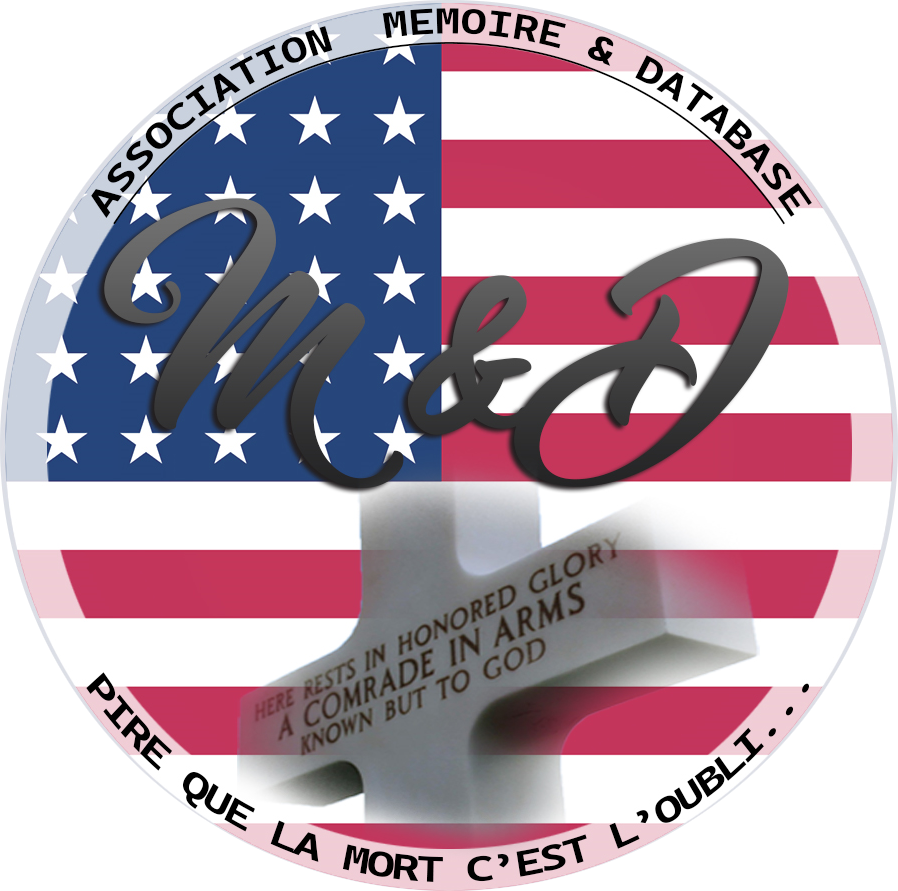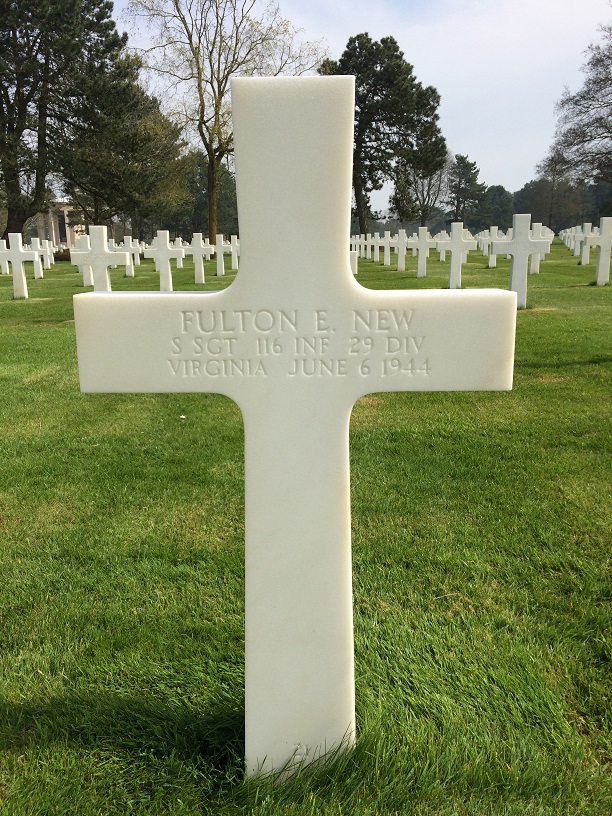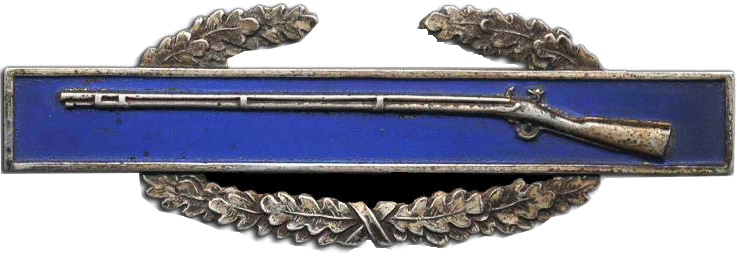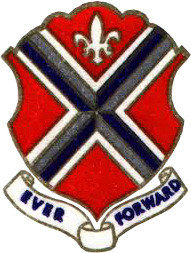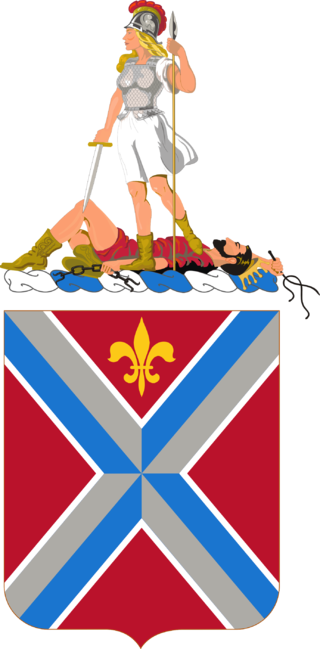|
Fulton Eugene NEW
| ||||||||||||||||||||||||
|---|---|---|---|---|---|---|---|---|---|---|---|---|---|---|---|---|---|---|---|---|---|---|---|---|
|
Source : Fold 3
| ||||||||||||||||||||||||
| NUMERO DE SERVICE | 20364677 | |||||||||||||||||||||||
| AGE | 23 ans | |||||||||||||||||||||||
| DATE DE NAISSANCE | 1921 Halifax, VIRGINIA | |||||||||||||||||||||||
| ÉTAT D’ENRÔLEMENT | VIRGINIA | |||||||||||||||||||||||
| FAMILLE | Célibataire | |||||||||||||||||||||||
| GRADE | Staff Sergeant | |||||||||||||||||||||||
| FONCTION | Infantry Man | |||||||||||||||||||||||
| PROFESSION AVANT INCORPORATION | Unskilled occupations in manufacture of textiles |  | ||||||||||||||||||||||
| DATE D'INCORPORATION | 3 février 1941 South Boston VIRGINIA | |||||||||||||||||||||||
| COMPANY | Company F | |||||||||||||||||||||||
| REGIMENT | 116th Infantry Regiment | |||||||||||||||||||||||
| DIVISION | 29th Infantry Division | |||||||||||||||||||||||
| DATE DU DECES | 6 juin 1944 |
Source : Frogman | ||||||||||||||||||||||
| STATUT | KIA | |||||||||||||||||||||||
| LIEU DU DECES | Dog Red - Omaha Beach | |||||||||||||||||||||||
| CIMETIERE PROVISOIRE |
CIMETIERE PROVISOIRE de St Laurent N°3582
| |||||||||||||||||||||||
| CIMETIERE | NORMANDY AMERICAN CEMETERY de Colleville | |||||||||||||||||||||||
| TOMBE |
| |||||||||||||||||||||||
| DECORATION |
| |||||||||||||||||||||||
| ||||||||||||||||||||||||
| HISTOIRE | ||||||||||||||||||||||||
|
By : fireeye(Fold3.com) Fulton Eugene New est né le 18 mai 1920 dans le comté de Halifax, en Virginie, d'Adrian Floyd et d'Ella Baker (Landrum) New; il avait un frère et trois sœurs. Sa mère est morte quand il avait environ dix ans et son père quand il avait 12 ans. Il est issu d'une famille de militaires, son grand-père a combattu pendant la guerre civile, son grand-père pendant la guerre de 1812, son arrière-grand-père pendant la guerre d'indépendance. Il s'est enrôlé comme caporal de la Garde nationale le 3 février 1941 à South Boston, en Virginie. Fulton était un sergent d'état-major de la compagnie F de la 29e division d'infanterie, 116e régiment d'infanterie lorsqu'il se dirigea vers Omaha Beach le 6 juin 1944. La compagnie « F » devait faire partie de la première vague de débarquement. Son secteur assigné (Dog Red) se trouvait directement devant les positions allemandes fortement fortifiées. Les rampes sont tombées dans des eaux hautes ou plus profondes lorsque l'ennemi a ouvert le feu, déclenchant instantanément un feu croisé de tirs automatiques très lourds et précis des deux côtés de la plage; le moyen le plus sûr de descendre des bateaux était de plonger dans l'eau. La compagnie « F » a perdu de nombreux officiers et a été désorganisée en raison de ces pertes. Les bombardements navals et aériens ont pilonné les défenses allemandes, mais les bombardements aériens ont été inefficaces et la marine n'a pas réussi à détruire la plupart des emplacements de canons allemands. Le S/Sgt New est enterré au cimetière américain de Normandie. Il a obtenu ses badges Purple Heart, Combat Infantryman et Marksmanship, WW II Victory, American Campaign and Good Conduct médailles, Army Presidential Unit Citation et rubans de campagne Europe-Afrique-Moyen-Orient. Il a peut-être réussi à sortir du bateau, à traverser la plage ou à gravir la colline, mais il a tout donné pour notre liberté – puissions-nous toujours nous en souvenir. | ||||||||||||||||||||||||
Activated/Activé |
Normandy/Normandie |
| 3 Feb 1941 | Days of Combat/Jour de Combat 242 |
| Casualties/Victimes 20 620 | |
Entered Combat/Entré au combat |
|
| 6 Jun1944 D-Day | |
|
Commanding Generals/Commandants généraux Maj. Gen. Milton A. Reckord (Feb 41 - Jan 42) |
Campaigns/CampagnesNormandy (6 Jun 44 - 24 Jul 44)
|
PLAN DE ROUTE DE LA CAMPAGNE - CAMPAIGN ROUTE MAP |
|
 |
|
DIVISION CHRONICLEThe 29th Infantry Division trained in Scotland and England for the crosschannel invasion, October 1942-June 1944. Teamed with the 1st Division, a regiment of the 29th (116th Infantry) was in the first assault wave to hit the beaches at Normandy on D-day, 6 June 1944. Landing on Omaha Beach on the same day in the face of intense enemy fire, the Division soon secured the bluff tops and occupied Isigny, 9 June. The Division cut across the Elle River and advanced slowly toward St. Lo, fighting bitterly in the Normandy hedge rows. After taking St. Lo, 18 July 1944, the Division joined in the battle for Vire, capturing that strongly held city, 7 August. Turning west, the 29th took part in the assault on Brest, 25 August-18 September 1944. After a short rest, the Division moved to defensive positions along the Teveren-Geilenkirchen line in Germany and maintained those positions through October. (In mid-October the 116th Infantry took part in the fighting at the Aachen Gap.) On 16 November the Division began its drive to the Roer, blasting its way through Siersdorf, Setterich, Durboslar, and Bettendorf, and reaching the Roer by the end of the month. Heavy fighting reduced Julich Sportplatz and the Hasenfeld Gut, 8 December. From 8 December 1944 to 23 February 1945, the Division held defensive positions along the Roer and prepared for the offensive. The attack jumped off across the Roer, 23 February, and carried the Division through Julich, Broich, Immerath, and Titz, to Munchen-Gladbach, 1 March 1945. The Division was out of combat in March. In early April the 116th Infantry helped mop up in the Ruhr area. On 19 April 1945 the Division pushed to the Elbe and held defensive positions until 4 May. Meanwhile, the 175th Infantry cleared the Klotze Forest. After VE-day, the Division was on military government duty in the Bremen enclave. |
CHRONIQUE DE DIVISIONLa 29th Infantry Division s'entraîna en Ecosse et en Angleterre pour l'invasion crosschannel, d'octobre 1942 à juin 1944. En équipe avec la 1st Division, un régiment du 29th (116th Infantry) se trouvait dans la première vague d'assaut pour frapper les plages de Normandie. Le 6 juin 1944, débarquant à Omaha Beach, le même jour, face à un feu nourri de l'ennemi, la division s'empara bientôt des falaises et occupa Isigny, le 9 juin. La Division traversa la rivière Elle et s'avança lentement vers Saint-Lô, se battant amèrement dans les rangées de haies de Normandie. Après avoir pris St. Lo, le 18 juillet 1944, la division se joignit à la bataille de Vire pour s'emparer de cette ville fortement occupée, le 7 août. Tournant vers l'ouest, le 29 a pris part à l'assaut sur Brest, 25 août-18 septembre 1944. Après un court repos, la division a déménagé à des positions défensives le long de la ligne Teveren-Geilenkirchen en Allemagne et a maintenu ces positions jusqu'en octobre. (À la mi-octobre, le 116e régiment d'infanterie prit part aux combats à Aix-la-Chapelle.) Le 16 novembre, la division commença sa route vers la Roer, traversant Siersdorf, Setterich, Durboslar et Bettendorf, et atteignant la Roer par la fin du mois. Les combats intenses ont réduit Julich Sportplatz et le Hasenfeld Gut, le 8 décembre. Du 8 décembre 1944 au 23 février 1945, la division occupe des positions défensives le long de la Roer et se prépare à l'offensive. L'attaque a sauté à travers le Roer, le 23 février, et a porté la Division par l'intermédiaire de Julich, Broich, Immerath, et Titz, à Munchen-Gladbach, le 1er mars 1945. La Division était hors combat en mars. Au début du mois d'avril, le 116th Infantry a aidé à nettoyer la région de la Ruhr. Le 19 avril 1945, la division pousse vers l'Elbe et occupe des positions défensives jusqu'au 4 mai. Pendant ce temps, le 175th Infantry a dégagé la forêt de Klotze. Après le jour de la victoire, la division était en service militaire dans l'enclave de Brême. |
| SOURCE INFORMATION & PHOTO | Armydivs.squarespace.com |
|---|
| SOURCE INFORMATION & SOURCE PHOTO | Findagrave.com - Abmc.gov - Aad.archives.gov - fireeye(Fold3.com) |
|---|---|
| PROGRAMMEURS | Eric, Henri, Garrett, Clive, Frédéric & Renaud |


